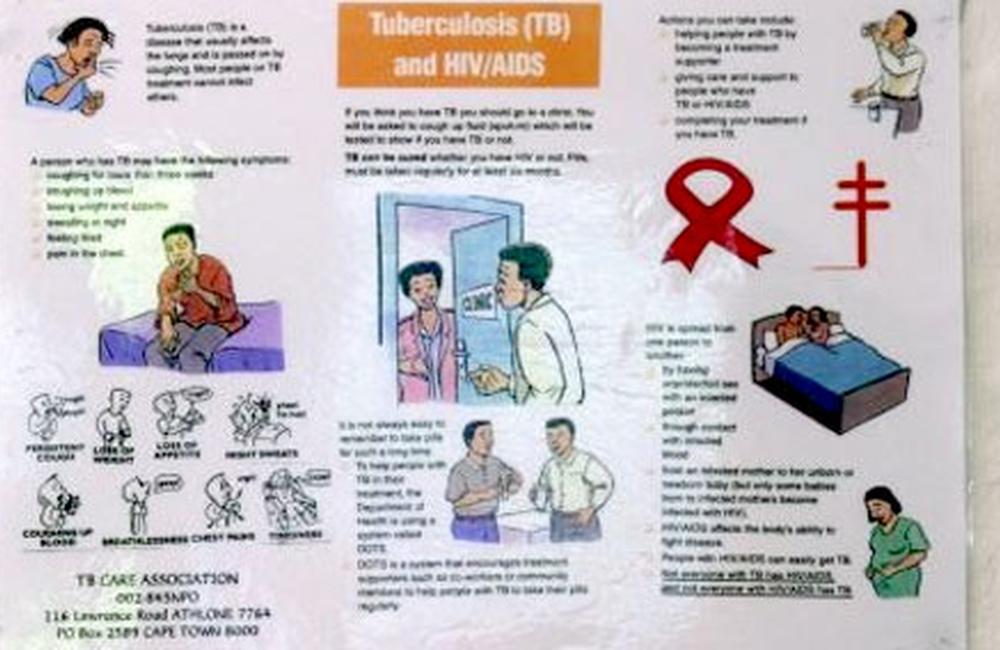
HIV infection did not have an impact on the time it took for people with multidrug-resistant tuberculosis (MDR-TB) to reach culture conversion, according to a study from Botswana presented at the 19th International AIDS Conference (AIDS 2012) in Washington DC. However, high rates of drug toxicity were found overall and were more likely to be associated with HIV co-infection.
In the pre-ARV era, MDR-TB with HIV infection had worse treatment responses and higher mortality compared to HIV-uninfected MDR-TB patients. Few studies of MDR-TB outcomes in HIV-positive people with access to ARVs have been carried out, particularly in sub-Saharan Africa, and there is still limited surveillance information about the prevalence of MDR-TB in people living with HIV, largely because until recently national HIV and TB programmes did not have the laboratory tools to carry out MDR-TB case-finding or comprehensive surveillance.
That information gap may begin to be filled as access to the Gene Xpert MTB/RIF test increases in sub-Saharan Africa from 2013 onwards due to funding from UNITAID, PEPFAR and the Bill and Melinda Gates Foundation. Xpert MTB/RIF is able to detect resistance to rifampicin within hours; if rifampicin resistance is present, samples can be referred for full drug susceptibility testing.
At present much of the knowledge about the prevalence and management of MDR-TB in sub-Saharan Africa is derived from South Africa, where MDR-TB has become recognised as a major public health problem since 2007. The study from Botswana is one of the first reports of MDR-TB management from outside South Africa.
Seventy culture-confirmed MDR-TB patients, who started individualised MDR treatment, at two public clinics prior to September 2008, were included in the study. Of the 70, 40 (57%) were HIV infected and 30 (43%) were HIV uninfected. The median baseline CD4 count of the 40 HIV-infected patients was 158 cells/mm3 (IQR: 88-347). At three months follow-up, the median CD4 count had increased to 262 cells/mm3 (IQR: 129-382). 28 (69%) of the HIV-infected patients were on ARVs prior to the start of MDR-TB treatment. There were no significant differences in the gender, median age, TB treatment history, or the number of TB drugs patients were resistant to, between the HIV-infected and HIV-uninfected groups.
Eighty-five per cent of the HIV-infected people reached sputum conversion, compared to 83% of those who were HIV-uninfected, a difference which was not found to be statistically significant (p>0.5). The study defined sputum culture conversion as two consecutive negative sputum cultures at least one month apart. Overall, 59 of 70 (84%) of the patients reached sputum culture conversion.
There was no statistically significant difference in the median time to sputum culture conversion for those MDR TB patients who were HIV infected (78 days, IQR: 42-186), compared to those who were HIV uninfected (95 days, IQR 70-133), p>0.5.
When adjusting for age, gender, TB treatment history, and the number of active agents, HIV-infected patients were 80% as likely to sputum culture convert as HIV uninfected patients, although this finding was again statistically non-significant (95% CI: 0.4 to 1.4).
“Our data suggest that in resource-limited settings with broad access to ARV and individualised MDR-TB care, short term microbiologic outcomes may be comparable in HIV-infected and uninfected patients,” said Dr Jeffrey Hafkin, who authored the study.
Four patients died following during the study period. Two of these deaths occurred following sputum culture conversion, both of whom were HIV infected. The remaining two deaths occurred prior to culture conversion, both of whom were HIV uninfected. Two patients developed extensively drug-resistant TB during follow-up, one of whom was HIV positive. No patients defaulted from care during the study period.
The number of people experiencing drug toxicities was the only significantly different outcome between the HIV-infected and HIV-uninfected groups. 40% of the HIV-infected patients experienced neuropathy compared to 10% of those who were not HIV-infected (p<0.01). Twenty-five per cent of HIV-infected patients experienced nephropathy, compared to only 7% of those who were not HIV infected (p=0.04). However, researchers warned that there may be misclassification bias as there was no characterisation of toxicity done to determine if the toxicity in HIV-infected patients was due to their ARVs.
Hafkin J et al. Impact of HIV on early MDR-TB treatment outcomes in Botswana. 19th International Conference on AIDS, abstract THAB0102, Washington, DC, July 2012.
View the abstract on the conference website.
View the webcast of the presentation on the conference website.
